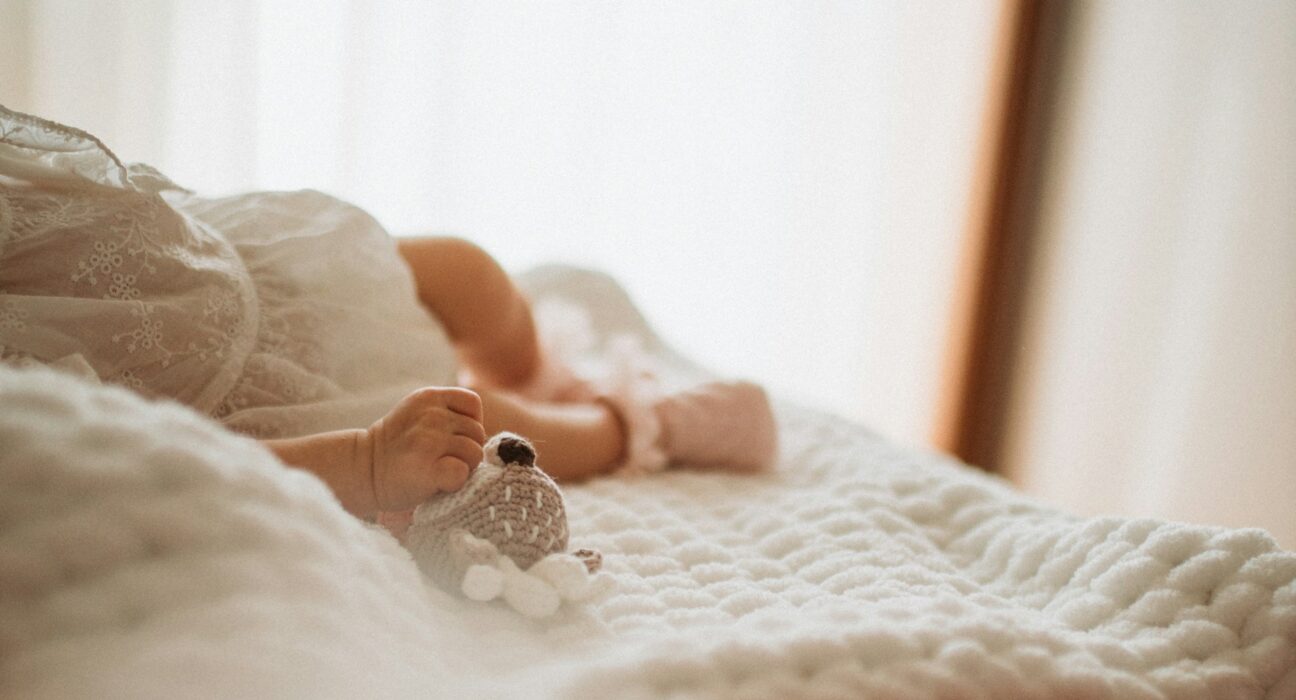When you’re expecting or have just welcomed your bundle of joy, the sheer volume of baby product choices can feel overwhelming. Between sleepless nights and endless diaper changes, the last thing you want is to worry about whether the products you’re using are safe for your precious little one. Yet, many conventional baby products contain ingredients that even seasoned parents would struggle to pronounce, let alone understand their effects on developing bodies.
The good news? Creating a safer environment for your natural baby doesn’t require a chemistry degree or a complete lifestyle overhaul. More parents are discovering that switching to cleaner alternatives can be both simple and stylish. This shift toward organic parenting isn’t just about following trends—it’s about making informed choices that align with your values while keeping your family healthy.
Whether you’re a first-time parent navigating the baby aisle with wide eyes or a seasoned caregiver looking to make some swaps, this guide will help you identify the clean products that truly matter. We’ll explore which ingredients to avoid, highlight the best alternatives, and share practical tips for making the transition without breaking the bank.
Understanding What Makes Products Truly Clean
Decoding Ingredient Labels Like a Pro
Reading baby product labels requires a detective’s eye and a parent’s intuition. Many products marketed as “gentle” or “mild” still contain potentially harmful chemicals. The key lies in understanding what to look for—and what to avoid.
Start by checking for sulfates, particularly sodium lauryl sulfate (SLS), which can irritate sensitive skin. Parabens, used as preservatives, have raised concerns about hormone disruption. Synthetic fragrances, often listed simply as “fragrance,” can contain dozens of undisclosed chemicals. Phthalates, commonly found in products with artificial scents, have been linked to developmental issues.
Instead, seek out products with recognizable ingredients. Coconut oil, shea butter, calendula, and chamomile are gentle options that have been used safely for generations. When you see names you could find in your kitchen or garden, you’re usually on the right track.
The Difference Between Marketing and Reality
The beauty industry isn’t heavily regulated, which means terms like “natural” and “hypoallergenic” don’t guarantee safety. Companies can use these buzzwords without meeting specific standards. This makes it crucial to look beyond marketing claims and focus on actual ingredient lists.
Certifications from organizations like USDA Organic, EWG Verified, or Cradle to Cradle provide more reliable assurance. These third-party validations require companies to meet strict standards for ingredient safety and environmental impact. While certified products may cost slightly more, they offer peace of mind that’s often worth the investment.
Essential Clean Swaps for Your Nursery
Bath Time Basics That Actually Work
Bath time should be a soothing ritual, not a chemistry experiment. Conventional baby shampoos and body washes often contain harsh detergents that strip natural oils from delicate skin. Clean alternatives use gentle, plant-based cleansers that effectively clean without over-drying.
Look for shampoos with coconut-derived surfactants and avoid anything with artificial colors. Your baby’s hair doesn’t need to smell like artificial vanilla—a subtle, naturally-derived scent or no scent at all works beautifully. Some excellent options include castile soap-based formulas that can double as body wash, making bath time simpler and reducing product clutter.
For babies with eczema or particularly sensitive skin, consider oatmeal-based cleansers or products specifically formulated for compromised skin barriers. These often contain colloidal oatmeal or ceramides that help maintain the skin’s natural protective function.
Diaper Duty Without the Worry
Diaper rash creams present a unique challenge because they need to be both effective and safe. Many conventional options contain petroleum-based ingredients or zinc oxide with nanoparticles. Cleaner alternatives often use non-nano zinc oxide, which provides excellent protection without the absorption concerns.
Plant-based ingredients like calendula, chamomile, and coconut oil can soothe irritated skin naturally. Some parents swear by products containing probiotics, which help maintain healthy skin flora. When choosing diaper cream, consider your baby’s specific needs—some require heavy-duty protection, while others do well with lighter, more breathable formulas.
Don’t forget about the diapers themselves. While not exactly a beauty product, choosing diapers free from chlorine bleaching, latex, and synthetic fragrances supports your overall clean products approach. Many eco-friendly diaper brands also offer subscription services, making the switch even more convenient.
Creating Your Clean Beauty Routine
Skincare That Supports Natural Development
Baby skin is significantly thinner and more permeable than adult skin, making ingredient choices even more critical. A simple routine often works best—over-cleansing or using too many products can disrupt the skin’s natural balance.
Start with a gentle, fragrance-free moisturizer for daily use. Ingredients like sunflower oil, jojoba oil, or shea butter provide excellent hydration without clogging pores. For extra dry patches or during harsh weather, pure coconut oil or a thicker balm can provide additional protection.
Sun protection becomes important once your newborn baby starts spending more time outdoors. Mineral sunscreens with zinc oxide or titanium dioxide offer broad-spectrum protection without chemical absorption. Look for formulas specifically designed for babies, which tend to be less likely to cause eye irritation.
Special Considerations for Sensitive Souls
Some babies have particularly reactive skin that requires extra care. For these little ones, patch testing becomes even more important, even with clean products. Apply a small amount of any new product to a small area and wait 24 hours to check for reactions.
Fragrance-free doesn’t always mean scent-free—natural ingredients can still have subtle aromas that some babies find irritating. When in doubt, choose products with the shortest ingredient lists and the mildest formulations. Sometimes the most stripped-down products work best for sensitive skin.
Making the Transition Smooth and Sustainable
Budget-Friendly Approaches to Clean Living
Switching to clean products doesn’t require replacing everything overnight or spending a fortune. Start with the products your baby uses most frequently—typically shampoo, body wash, moisturizer, and diaper cream. These have the most contact with your baby’s skin and offer the biggest impact for your investment.
Consider making some products yourself. Simple recipes using ingredients like coconut oil, shea butter, and oats can create effective moisturizers and cleansers at a fraction of the cost. Many organic parenting blogs offer tested recipes that are both safe and effective.
Buy in bulk when possible, or look for subscription services that offer discounts. Many clean beauty brands offer starter sets or travel sizes that let you try products before committing to full sizes. This approach helps you find what works for your baby without waste or unnecessary expense.
Building Habits That Stick
Success with clean products often comes down to building sustainable habits rather than making dramatic changes. Start by reading labels before purchasing—even just being aware of what’s in products makes you a more informed consumer.
Keep a list of ingredients to avoid on your phone for easy reference while shopping. Many apps can scan barcodes and provide safety ratings for products, making store decisions simpler. Over time, choosing cleaner options becomes second nature.
Remember that perfection isn’t the goal—progress is. Every clean product swap moves you closer to a safer environment for your family. Some days you might need to use whatever’s available, and that’s perfectly okay. The goal is to make better choices when possible, not creating additional stress during an already demanding time.
Moving Forward with Confidence
Creating a clean beauty routine for your natural baby represents more than just product swaps—it’s about building a foundation of conscious choices that will benefit your family for years to come. The journey toward organic parenting doesn’t have to be overwhelming or expensive. Small, thoughtful changes can create significant improvements in your baby’s exposure to potentially harmful chemicals.
Start with one or two product categories and gradually expand your clean products collection as you discover what works best for your family. Trust your instincts—if a product seems to irritate your baby’s skin or doesn’t feel right to you, don’t hesitate to try something else. Every baby is unique, and what works perfectly for one might not suit another.
Remember to celebrate the positive changes you’re making rather than worrying about every imperfect choice. Your awareness and intention to provide the best for your baby already put you on the right path. As you continue this journey, you’ll likely find that choosing cleaner options becomes easier and more intuitive.
Ready to start making some swaps? Begin with your most-used products and take it one step at a time—your future self (and your baby) will thank you for the foundation you’re building today.







